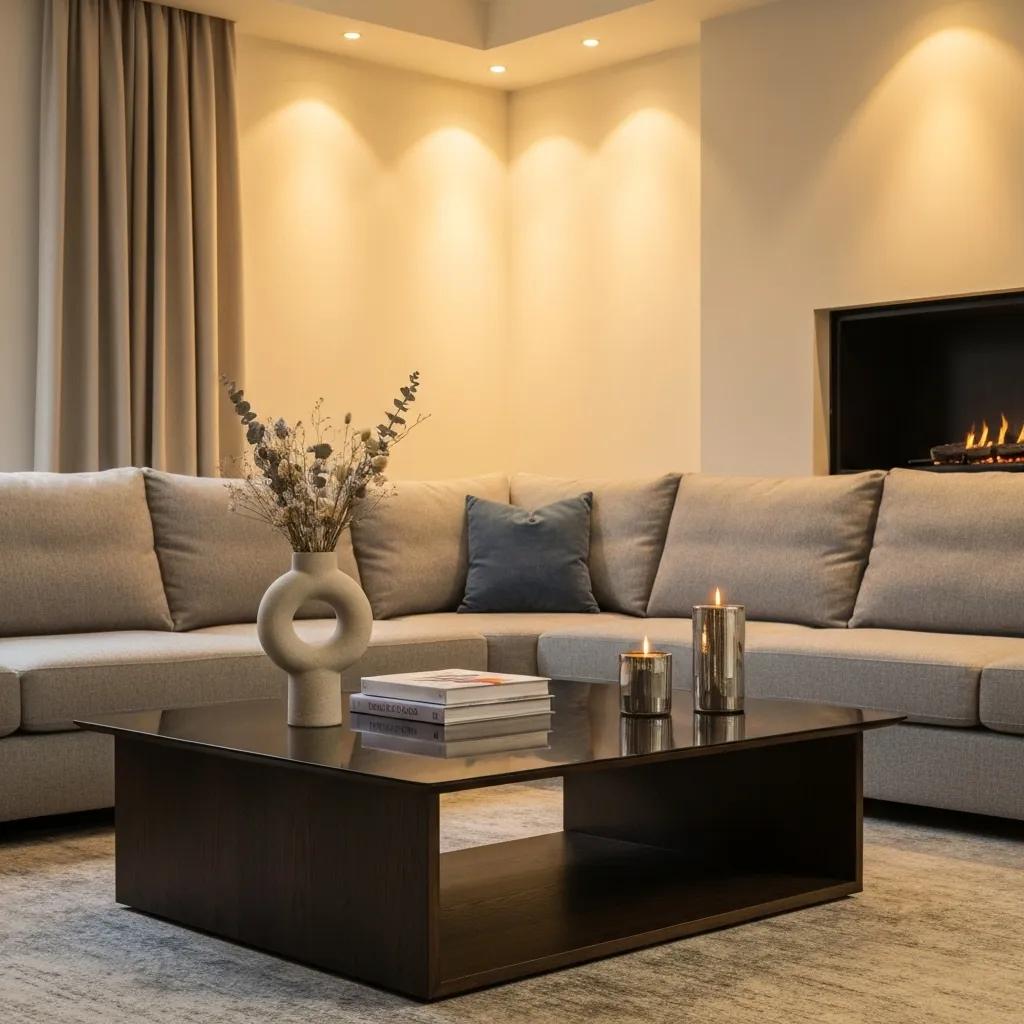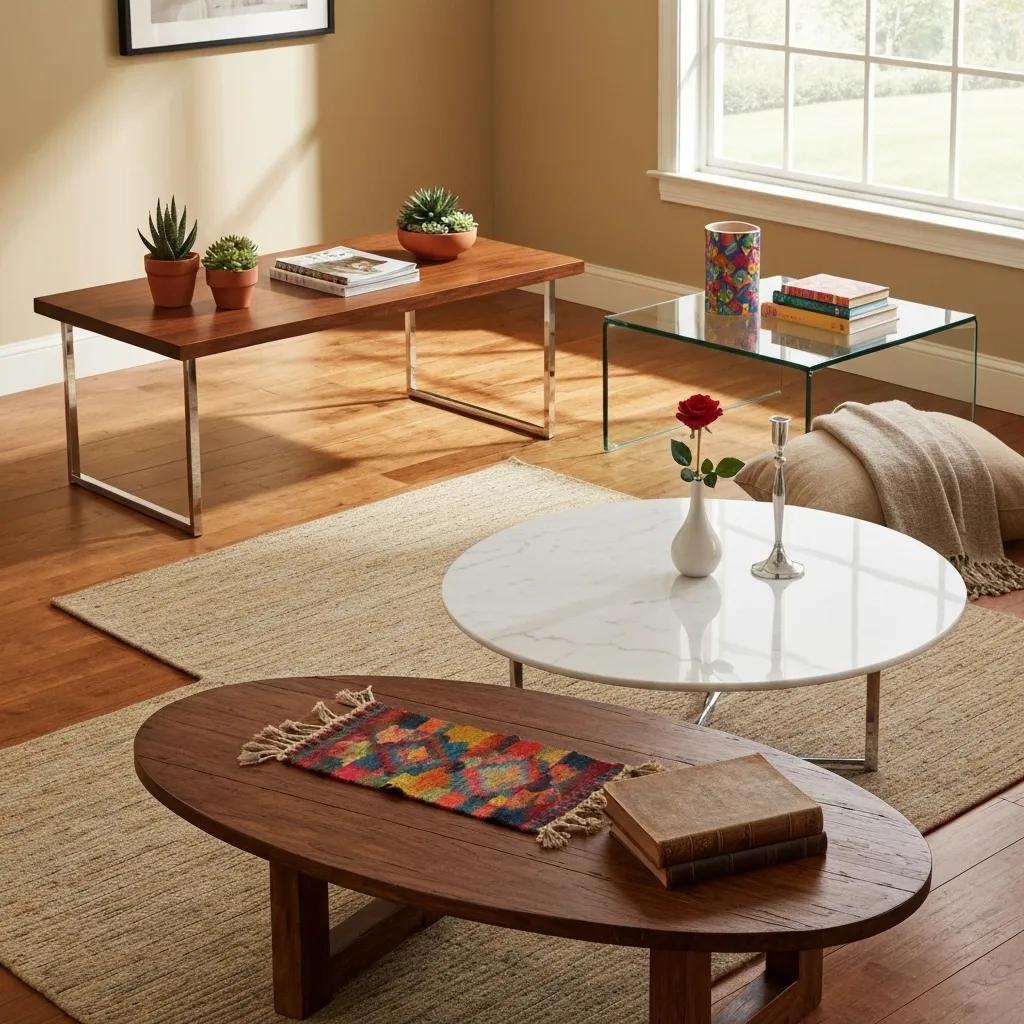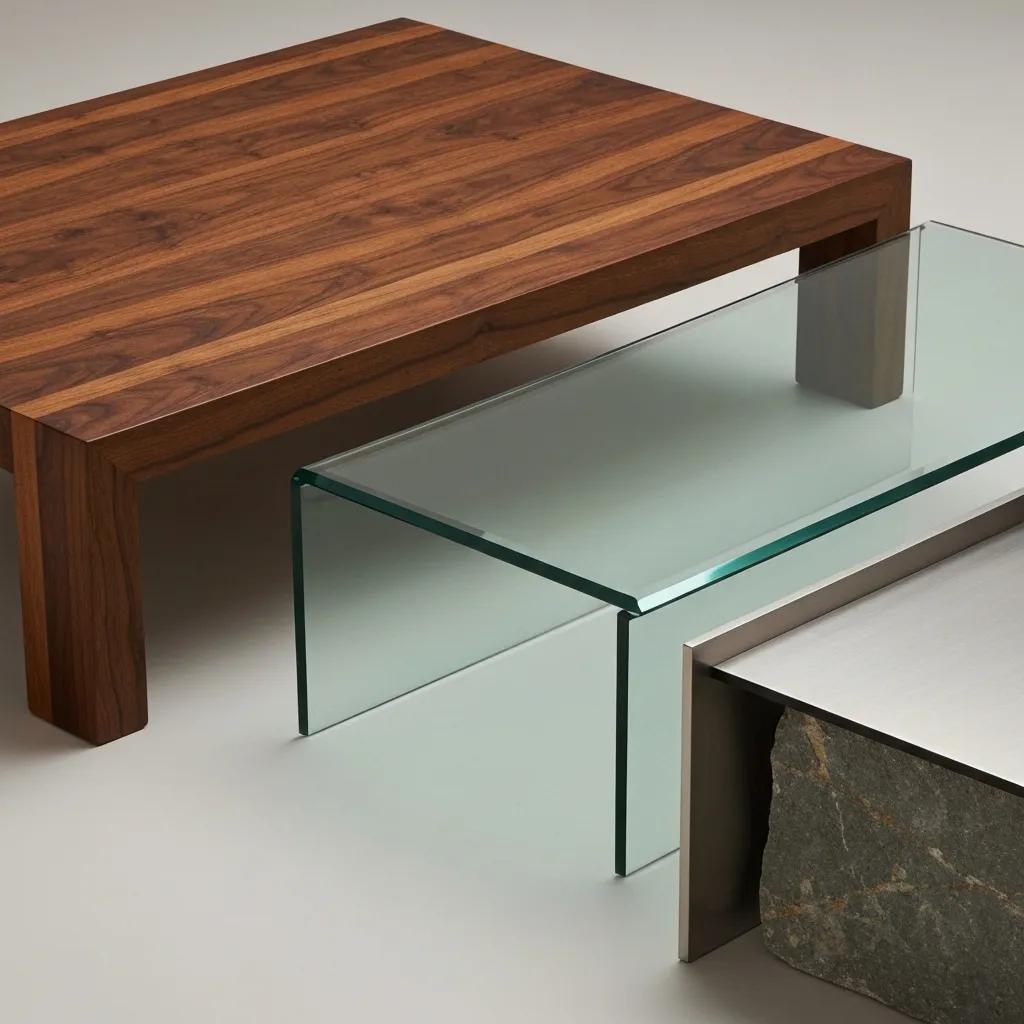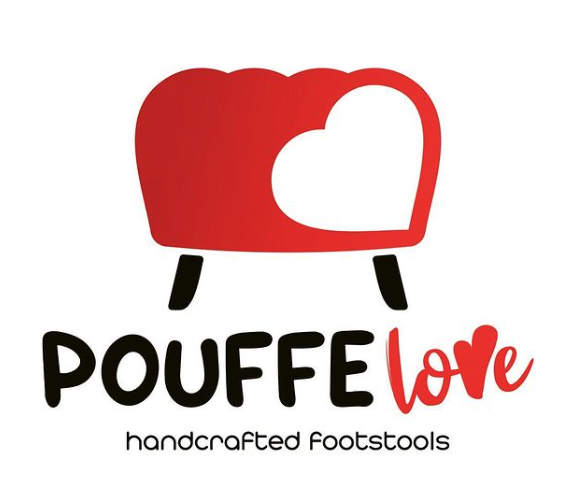
Finding Your Perfect Coffee Table: Expert Advice on Size, Shape, Materials, and Style
A coffee table is the heart of your living room, balancing your sofa’s scale, ensuring smooth movement, and boosting your room’s visual appeal. To find the ideal one, measure your seating area, pick a shape that promotes easy circulation, select materials suited to your lifestyle, and match its style to your existing decor. This guide will cover precise dimensions relative to your sofa, the advantages of different shapes for various layouts, robust material choices, and how to harmonize style. Plus, you’ll discover clever multifunctional features that add storage and flexibility.
What Size Coffee Table is Just Right for Your Living Room?
Getting the coffee table size right means you can comfortably reach it from any seat and maintain clear pathways through your living room. The correct dimensions prevent your space from feeling cramped and ensure everything is within easy reach.
How to Measure Coffee Table Height to Match Your Sofa
Your coffee table should be the same height as, or 1–2 inches shorter than, your sofa’s seat cushion.
- Measure from the floor to the top of your sofa’s seat cushion.
- Choose a table within this height range to perfectly hold your drinks and decor.
Once you’ve nailed the height, you can focus on getting the proportional length right for a harmonious look with your seating.
Coffee Table Height and How It Affects Comfort
The sweet spot for coffee table height is generally the same as, or 1–2 inches lower than, your sofa’s seat cushion. This ensures you can comfortably reach it to place drinks or display items. Getting this ergonomic detail right is key to a functional and inviting living space, making everything feel effortless.
This research backs up our advice on coffee table height in relation to your sofa’s seat height.
What’s the Ideal Coffee Table Length Compared to Your Sofa?
Aim for a coffee table length that’s about two-thirds to three-quarters of your sofa’s total length.
- If your sofa measures 90 inches long, a table between 60 and 68 inches would be ideal.
- This proportion stops the table from overwhelming the room.
- It also leaves space for side tables or extra seating.
Keeping these proportions in mind ensures there’s enough breathing room around all your furniture.
How Much Space Should You Leave Around Your Coffee Table?
Leave about 12–18 inches between the edge of your coffee table and your sofa. For walls or other furniture, aim for 18–24 inches of clearance.
- This keeps walkways clear for easy movement.
- It provides ample legroom and prevents accidental bumps.
- This ensures you can easily get to your seats and any storage.
With the right clearance sorted, you’re ready to pick a shape that best suits your room’s layout.
Which Coffee Table Shape Works Best for Your Space and Sofa?

The shape of your coffee table plays a big role in how easily people can move around, how safe the space is, and how accessible seating is, all contributing to a more harmonious room. Each shape fits differently with seating arrangements and traffic patterns.
Coffee Table Shape and How It Affects Room Flow
A coffee table’s shape can really influence how you move through a room. Round and oval tables are often the top choice for busy areas or homes with kids because they don’t have any sharp corners. This design choice makes the space safer and feel more open and accessible.
This expert insight supports our advice on how coffee table shapes impact your room’s functionality and safety.
What Are the Advantages of Rectangular and Square Coffee Tables?
Rectangular tables bring a sense of order and clean lines that naturally complement most sofas, creating a timeless look. Square tables offer a balanced feel for sectionals, giving everyone equal access, and work wonderfully as a pair in modular seating setups.
Why Opt for Round or Oval Coffee Tables in Small or Kid-Friendly Spaces?
Round and oval tables ditch the sharp corners, meaning fewer bumps and better flow in tighter spaces. Their curved design also softens the look of angular sofas and allows children to move around more freely when they’re playing.
How Do Nesting Coffee Tables Add Flexibility to Small Living Rooms?
Nesting tables can be tucked together when space is tight and pulled apart to welcome guests or showcase your favorite items. This adaptable design lets you adjust your surface area without sacrificing style or floor space.
What Are the Best Coffee Table Materials for Lasting Style and Durability?

Choosing materials that stand the test of time means matching your lifestyle needs with your aesthetic tastes and considering long-term care. The material you select will influence how you maintain it, its overall weight, and how well it blends with your existing furniture.
How Do Wooden Coffee Tables Blend Enduring Style with Robustness?
Solid hardwoods like oak, walnut, and teak offer a natural warmth and impressive strength. Their unique grain patterns add character, while protective finishes shield against scratches and moisture, making them perfect for family rooms and busy living areas.
What Are the Upsides and Downsides of Glass and Metal Coffee Tables?
- Glass tables create a light, airy feel but require constant cleaning and can chip if not tempered.
- Metal tables provide sleek, contemporary lines and resist dents, though some finishes need protection against rust.
Understanding these trade-offs helps you balance looks with practicality.
When Might Stone or Mixed-Material Coffee Tables Be the Right Choice?
Stone surfaces, such as marble and travertine, offer a touch of luxury and hold up well to heavy use when properly sealed. Mixed-material designs, like a glass top on a metal base, combine contrasting textures to achieve a custom look with balanced performance.
How to Style Your Coffee Table to Complement Your Home Decor?
Matching your coffee table’s style to your room’s overall theme helps tie your furniture together and enhances the entire space. A cohesive style choice boosts both the table’s function and its visual impact.
What Defines Modern, Minimalist, and Mid-Century Coffee Table Styles?
- Modern tables feature clean lines, understated colors, and materials like glass or metal for a sleek appearance.
- Minimalist designs focus on simplicity, compact shapes, and uncluttered surfaces.
- Mid-century pieces showcase angled legs, flowing shapes, and a mix of wood and metal for a retro vibe.
These styles offer distinct design languages that can align with a wide range of decor preferences.
How Do Rustic, Industrial, and Traditional Styles Differ?
- Rustic tables often use reclaimed wood and weathered finishes to create a cozy, farmhouse feel.
- Industrial designs combine rugged metal frames with wooden tops for a utilitarian, edgy look.
- Traditional tables boast intricate details, deep wood stains, and classic shapes inspired by historical craftsmanship.
What Are Some Bohemian and Eclectic Coffee Table Style Ideas?
- Bohemian tables embrace natural elements like rattan or woven textures, often layered with vibrant accents.
- Eclectic styles might mix a unique metal base with a reclaimed wood top, celebrating contrast and personal flair.
How Can Coffee Tables with Multiple Functions Enhance Your Living Room?
Coffee tables designed for more than one purpose maximize storage and adapt to various activities, improving both practicality and style, especially in smaller or busier homes.
What Storage Features Should You Look For in a Coffee Table?
- Drawers and shelves are perfect for tucking away remotes, magazines, and small essentials.
- Hidden compartments can be lifted to conceal electronics or valuables.
- Open cubbies provide easy access for storing baskets or decorative items.
Smart storage solutions help keep your living area tidy without needing extra furniture.
How Do Lift-Top and Ottoman Coffee Tables Add Practicality?
Lift-top tables can be raised to desk or dining height, making them ideal for working on a laptop or enjoying a meal while seated. Upholstered ottoman tables can double as extra seating or a comfortable footrest, and many offer hidden storage space beneath the cushion.
Why Are Nesting Tables a Great Choice for Small Spaces and Versatility?
Nesting table sets can expand to offer more surface area when you need it and then tuck neatly away to save floor space. Their adaptable configuration is perfect for entertaining, crafting sessions, or simply changing up your decorative displays.
Selecting a coffee table that fits your space, matches your style, meets your material needs, and offers useful features ensures your living room is both inviting and well-organized. By combining precise measurements with careful shape selection, you guarantee comfort and a sense of harmony, especially in high-traffic zones. Your choice of materials will then dictate maintenance and long-term appeal, while aligning the style unifies your entire decor. Finally, multifunctional options provide discreet storage and adaptable surfaces, making your coffee table a truly indispensable piece.
